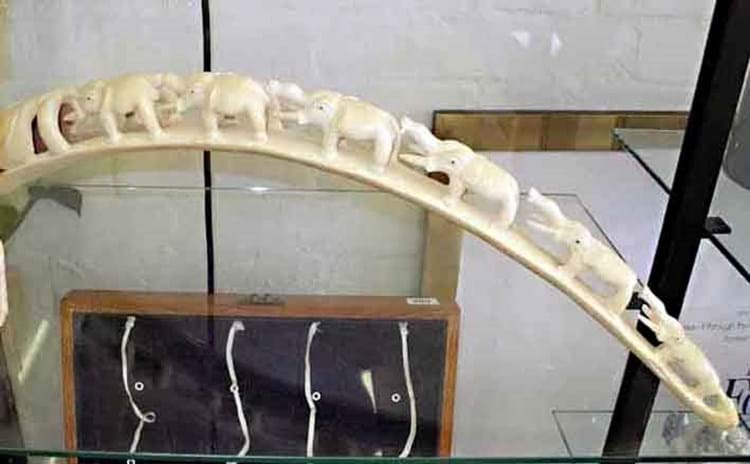
Chiswick Auctions, who will go to court next month, say a mistake was made and argue they "are being made scapegoats in a situation where every auction room in the land treads a difficult line".
Their July 3, 2012, sale offered as lot 282 an item catalogued as 'an antique carved ivory tusk worked as a train of elephants'. It had been taken in over the front desk from a first-time vendor by a senior valuer who deemed the item to have been 'worked' prior to June 1947 as the law demands. The buyer, at around £100, was a stallholder at Portobello Road.
During a subsequent sweep of the market by special constables from the Wildlife Crime Unit and the Arts and Antiques unit, the carving was confiscated and sent for scientific analysis. The process (costing in the region of £500) showed the tusk was from an elephant that had died in the mid 1960s.
After police learned the source of the illegal carving, Chiswick Auctions' managing director William Rouse was asked to make a statement at Notting Hill Police Station in April 2013. Sixteen months later, on August 19 this year, he received an email from DC Sarah Bailey of the Wildlife Crime Unit outlining their intention to prosecute, stating that the hearing would be at Ealing Magistrates Court on October 13.
Mr Rouse acknowledges an error of professional judgment - and the need for additional vigilance - but believes this to be an isolated 'accident' and points to the relatively low value of this item (producing commissions of around £40) as proof that his firm did not hope to greatly profit from its sale.
He also believes the investigation has turned into a witch hunt after he was asked to supply details of both the vendor of this 1960s tusk and those of other customers who invite the auctioneers to sell modern ivory but are routinely turned away.
Impending Trial
The impending trial, and a charge that risks a possible fine of £5000 or even six months' imprisonment, follows a year-long investigation by the Metropolitan Police. Operation Gulak, launched in 2012, saw plainclothes special constables, supported by detectives from the Wildlife Crime Unit, patrolling Portobello Market, checking for modern ivory or other items from endangered species. In one raid led by Inspector (Metropolitan Special Constabulary) Matthew Appleton, items were seized from 16 stallholders. Three dealers face charges under the CITES Regulations and may also go on trial.
Inspector MSC Appleton, who leads the Gulak unit, believes the court cases could set a precedent for future action: "At the moment the burden is on the seller to prove that the ivory is old. Just saying it looks old isn't a defence. These cases may test that."
Wildlife campaigners have long singled out the weekly market at Portobello in their campaign to curb the illegal trade in modern elephant ivory. In the much-publicised Elephants On The High Street report of 2004, International Fund for Animal Welfare (IFAW) were highly critical of the ignorance of traders at some of the UK's best-known antiques markets.





